On Saturday mornings throughout April, Kasmin is sharing catalog essays from the gallery archives. Today''s piece was written by Dr. Jo Melvin on the occasion of the exhibition Barry Flanagan: The Hare is Metaphor, which went on view at 515 West 27th Street between April 18–June 9, 2018.
A new exhibition in the Kasmin Sculpture Garden presents three of Flanagan''s large-scale bronzes embodying his signature motif of the hare. As New York City parks remain closed, the exhibition can be enjoyed remotely via the gallery''s digital channels until normal opening hours resume.
|
|
|
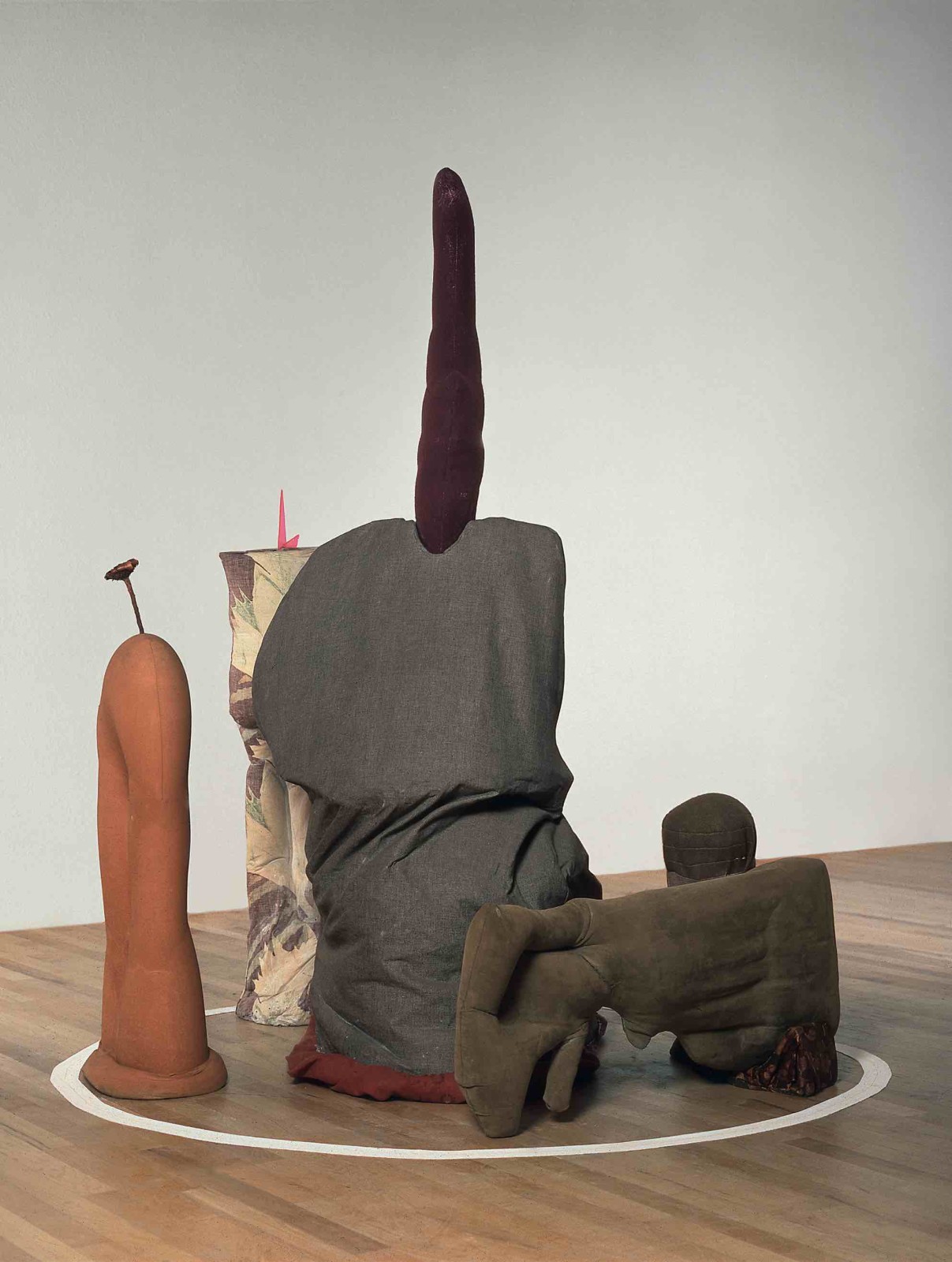
| Barry Flanagan, aaing j gni aa, 1965, cloth, plaster, plastic, 60 x 72 x 72 in152.4 x 182.9 x 182.9 cm.
All images courtesy the Estate of Barry Flanagan.
| |
|
Imaginary Solutions by Dr. Jo Melvin
|
|
Barry Flanagan (1941 – 2009) is one of Britain’s most inventive and original sculptors. His manner of communication and way of speaking was unique which some people found baffling. He was partial to silence. A conversation with him was punctuated by wordless periods more often prolonged than the interludes of a discursive articulation. He was a leading figure in a generation of influential sculptors emerging from St Martins School of Art in the 1960s. Richard Long, Bruce McLean and Gilbert & George were among his peers. And from student days, his practice questioned the attitude to formalism promulgated by Caro in his teaching. For instance, he proposed sound and its absence, silence, to be as inherent to sculpture’s character as weight and volume.
|
|
|
"I might define myself as a sculptor and do everything but sculpture."
—Barry Flanagan |
|
It is often thought that Flanagan made a sudden switch from abstraction to figuration in 1979 and that from then on, he worked exclusively in bronze. This assumption is wrong for three reasons: firstly, his practice was never exclusive in terms of material, since he continued to work with clay, cloth, printmaking, drawing, photography, film, light and sound throughout his life; secondly, he had begun working in bronze much earlier; and thirdly he considered the distinction between abstraction and figuration to be arbitrary and irrelevant. Flanagan’s first bronze cast, in 1969, was of a portrait of his father in law, Emlyn Lewis, the eminent plastic surgeon, whose own spectacles were cast for the piece. (2)
One of his teachers, the sculptor Phillip King, recalled an occasion when Flanagan directly tested the prevailing formalist parameters by throwing a lump of wet clay at the wall. (3) The sound of the action was as important to its sculptural mass as was the lump of clay sticking on the wall. King said its disruptive effect still resonates for him as sculptural proposition today. In a simple way, this performance demonstrates his exploration of materials: by using clay traditionally used for modelling, or ‘throwing’ for ceramic processes, he transforms it into a sound piece. The verticality of the wall is incorporated into the space of sculptural experience. On another occasion, during the ‘Destruction in Art Symposium’ (1966) organised by Gustav Metzger and Ralph Ortiz, Flanagan cycled round the room anti-clockwise on a white painted bicycle, with his shoulder leaning against the walls while Yoko Ono performed ‘Cut Piece’ (1964). The use of the bicycle and the anti-clockwise action both refer to Flanagan’s interests and preoccupations with ’pataphysics, invented by Alfred Jarry, the French playwright and writer who associated with the Symbolists. Jarry coined the term ’pataphysics which he defined through the mouth of his character, Dr Faustroll, as “the science of imaginary solutions.” (4)
To conjoin science, which frames theories of knowledge, with imaginary solutions is to fuse contrary positions. For Flanagan, ’pataphysics provided a refreshing antidote to the conventions of the education system, where preconceived answers follow predictable questions. It remained a guiding principle throughout his career. At different points he referred to Jarry as his ‘art father figure’ and his ‘anti-father figure’.
The word ’pataphysics is denoted with the apostrophe before the letter “p”, as if to close a previous speech mark, or to signal an ending before a beginning. It is characteristic of ’pataphysical thinking and is symbolised by the spiral on Pere Ubu’s belly in Jarry’s play ‘Ubu Roi’. The drawn spiral indicates a parallel spiral; one is negative to the other’s presence. The spiral occurs frequently in Flanagan’s practice from the action of the bicycle performance to the lines drawn on paper, carved in stone, shaped in clay, or cut in cloth.
|
|
|
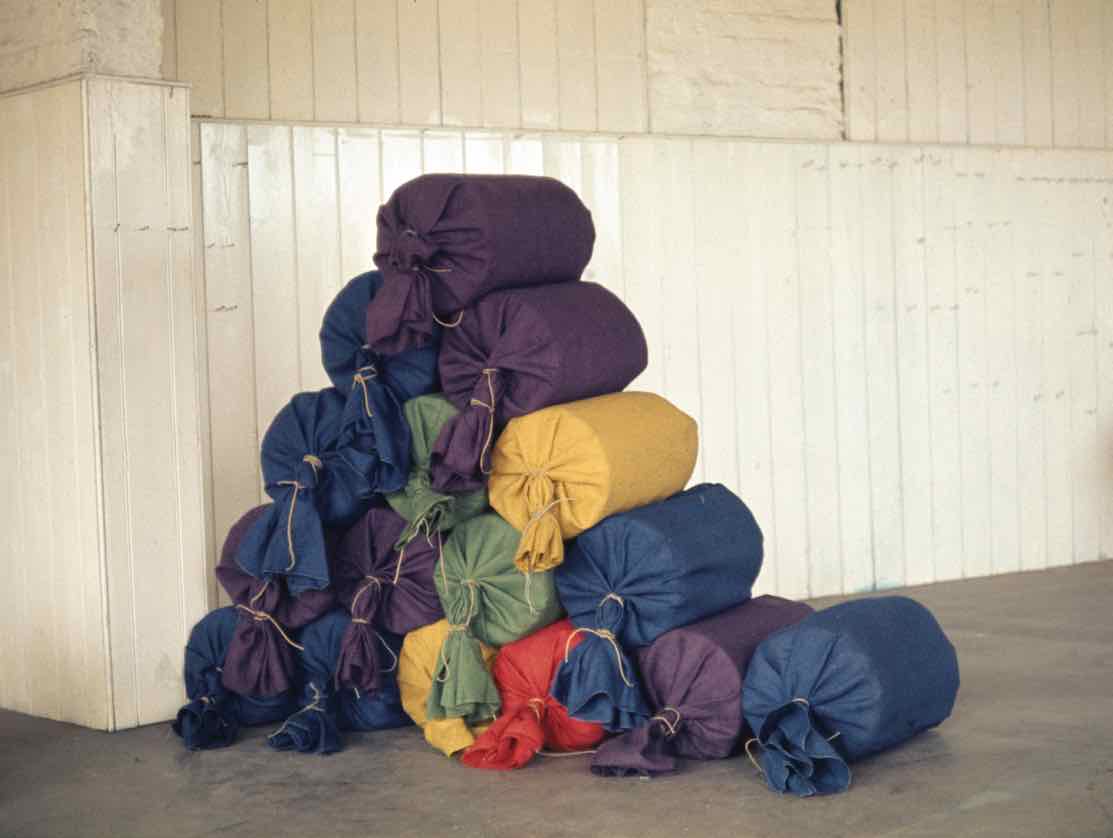
| Barry Flanagan, stack 1 ’67/68, 1967, hessian, foam rubber 54 x 66 x 30 in, 137.2 x 167.6 x 76.2 cm.
| |
|
Double entendre is central to invention. Jarry’s Dr Faustroll combines Faust, the mythological scholar who sold his soul to gain all knowledge, with a troll, a legendary cave dweller living on the margins of society. Groucho Marx’s ambiguous retort to the Friars Club, Beverly Hills, to which he belonged, exemplifies a ’pataphysical way of thinking: “I don’t want to belong to any club that will accept people like me as a member.” (5) Similarly Flanagan told Caro that he wanted to ‘assert himself twice as hard in a negative way.’ Caro invited Greenberg to hold seminars at the school. And Greenberg in turn, asked Caro to Bennington College where he spent two summers in 1963-64. They shared aesthetic values about sculpture which they considered should be constructed according to compositional principles of balance, weight, form and so on. Flanagan turned what he regarded as Greenberg’s and Caro’s stranglehold on sculptural perception into a direct challenge. He deconstructed the notion of the art object’s autonomy by writing and making concrete poetry, which extended to writing onto metal sculptures, using clay, making sculpture from canvas, hanging threads from the ceiling and screwing up paper.
Most notorious and provocative was a happening entitled ‘Still and Chew’. In August 1966, after Flanagan had completed his studies, he and the artist John Latham, who taught part-time at St Martins, invited a number of artists and writers associated with St Martins, including Alexander Trocchi, to Latham’s home. (6) This event has become a touchstone for artists and art historians because it marks a moment in the shift of attitudes to formalism. A year previously Flanagan had been invited to a party at which Greenberg was the guest of honour. He decided reluctantly to attend. Greenberg’s book, Art and Culture, had just been published, and the party was full of its discussion. Flanagan was so incensed by Greenberg’s inflexibility that he left early. (7)
|
|
|

| Barry Flanagan,Larger Thinker on Computer, 2003, bronze, 83 3/8 x 51 1/2 x 44 1/2 inches, 211.8 x 130.8 x 113 cm. Edition of 8 + 3 APs. | |
|
It is not known which artist thought up ‘Still and Chew’, but if its origin can be ascribed to either, it is likely to have been Flanagan’s idea. While it is often incorrectly attributed to Latham, sometimes without mention of Flanagan, its realisation was collaborative. (8) The title has the investigative quality that is apparent in Flanagan’s practice, as well as the associative critique of aesthetics and taste. What is certain is that a number of pages of Greenberg’s Art and Culture were chewed and spat into a container. (9)
Whilst at St Martins Flanagan instigated a fortnightly magazine called Silâns. (10) Its main focus was on concrete poetry and experimental artwork made for the page. The contributors were wide-ranging and included fellow students and staff, as well as artist’s statements including those by Jean Arp and George Vantongerloo, published in English for the first time. The cover of the first volume has lines from James Joyce’s Ulysses. Flanagan had Irish roots and like Joyce, was steeped in the combination of Celtic and Catholic traditions. With the letters, ‘SLLT’, Joyce denotes the sound the printing press makes. He remarks, ‘everything speaks in its own way’. In the same volume under the heading “Prelude” are two propositional statements by Flanagan: “to A Sculpture that has never been seen before” or “A sculpture that has never been seen.” They serve as epigraphs to a way of working.
|
|
|
Barry Flanagan,Organic Structure, 2002, bronze, 6 x 12 x 5 1/2 inches, 15.2 x 30.5 x 14 cm. Edition of 3 + 1 AP. |
|
|
During his studies, Flanagan made sculpture from builders’ material such as plaster, concrete, cloth, sand, scaffolding and girders. One of the first soft sculptures, entitled ‘aaing j gni aa’ (1965), combines anthropomorphic bulging shapes made from plaster filled cloth and different fabrics like ill-fitting clothes. A shard of luminous purple plastic sits incongruously on one. Initially Flanagan treated each component as a separate art object. But when he was assembling them in preparation as for an exhibition (he had been invited to put work into Better Books—a bookshop and gallery across the road from St Martins, where they also distributed his magazine Silâns) he decided that it was the ensemble that made the work. However, this group did not resolve it for him. It was only when he thought of making a circular enclosure in tape around it that he was satisfied. The title is a palindrome and demonstrates his interest in structure, repetition and language, as well as sound. Trying to say the title out loud is to perform a sound poem in its own right, aaing j gni aa; vocalising the letters has a circular action and like a boomerang, it comes back. This sculpture was shown in Flanagan’s first solo exhibition at the Rowan Gallery in 1966. (11)
Flanagan’s first sand sculpture ‘ringn 66’ (1966) was also included in the exhibition. It is hard to imagine now, but the sculpture, made by pouring sand directly onto the gallery’s carpeted floor was surprising to the viewers. Flanagan intervened with the natural heap by scooping out sand from the top with his cupped hands four times from the centre directionally North, South, East and West. The ring of the title is ambiguous. Is it the ring that the sand makes or the ‘n’ of negativity of the shape where the sand is removed? He joined the ‘n’ to the word ‘ring’. Like ‘aaing j gni aa’, it correlates with concrete poetry and his exploration of language structures. While Flanagan insisted ‘it was just dry sand […] poured on the floor’, as any builder would know, sand is varied in colour, grain, shape and texture. (12) Each type behaves differently.
The exhibition was rapidly absorbed into critical debates and also by the histories of ‘new practices’ and Conceptual Art. Held at the same time as an exhibition of Claes Oldenberg at Robert Frazer Gallery London, several critics picked up the shared interest in the malleable form of ‘soft sculpture’ and Flanagan’s work pointed to a ‘promising departure’. Paul Overy noted Flanagan’s cloth sculptures looked ‘soft to touch, like cuddly toys, but are in fact rock hard—which is nicely disturbing’, whereas Oldenberg’s washstand and engine, objects that are expected to be hard, looked soft and were soft’. (13) The New York Herald Tribune remarked ‘Flanagan has hardened up on the last experiments of Claes Oldenburg. But unlike his American contemporary, he leaves mystery intact. These extraordinary works, cloth-covered and surmounted by gleaming topknots, lie somewhere between objets trouvés and sophisticated interpretation.’ (14)
|
|
|

| Barry Flanagan, heap 3 ''67, 1967, hessian, cloth, sand, 22 x 53 x 43 inches, 55.9 x 134.6 x 109.2 cm. | |
|
Flanagan’s second solo exhibition with the Rowan Gallery in 1968 again focused on soft sculpture. The titles combined literal definitions of actions and objects linked by process, for instance ‘heap 1 ’67/68’, ‘pile 1 ’67/68’, ‘bundle 1 ’67/68’, ‘rack 1 ’67/68, ‘stack 1’67/68’, ‘one ton corner piece’ (1967/68) and ‘sand pour’ (1968). Flanagan’s assertion for sculpture, ‘the business is in the making’, demonstrates his practical approach. He made the bags with a sewing machine, filling them with sand, to make ‘heap’, and with polystyrene chips for ‘rack’. These bags were racked up on an upturned kitchen table, ‘stack’ was filled with foam rubber, and ‘bundle’ was filled with shredded paper. Other than sand, the bags’ fillers were the bulk materials used for the transport and safe packing of artwork. The sculpture ‘pile’ comprises four folded hessian cloths; the number ‘1’ of the title refers to the work’s first iteration in a series of four variables. Flanagan intended this work to be shown on a plinth. The others were made for the floor. In his bronzes Flanagan continued the practice of situating them on the floor and incorporated the plinth within the sculpture. This can be seen in ‘Ball and Claw’ (1981), where the Portland stone carved base is part of the work, and in ‘Large Boxing Hare on Anvil’ (1984), where the anvil, central to the foundry’s production, becomes part of the artwork. This attitude to combination is also evident in Flanagan’s use of bells and helmets. For example, ‘Harebell on Portland Stone Piers’ (1983) conjoins the hare and bell on the stone.
The early works investigate serialism, repetition, colour and the process-driven concerns of Minimalism with economical dexterity. The results are mysterious; and combine bathos with humour. In New York, this exhibition attracted the attention of the curator Jennifer Licht, the writer Ira Licht and the directors of Fischbach Gallery, Marilyn Fischbach and Donald Droll. Licht was the first American museum curator to identify the radical explorations of his work and she had already included a selection of his drawings in a touring exhibition ‘British Drawings the New Generation’ in 1967 in venues across the USA. (15)
|
|
|
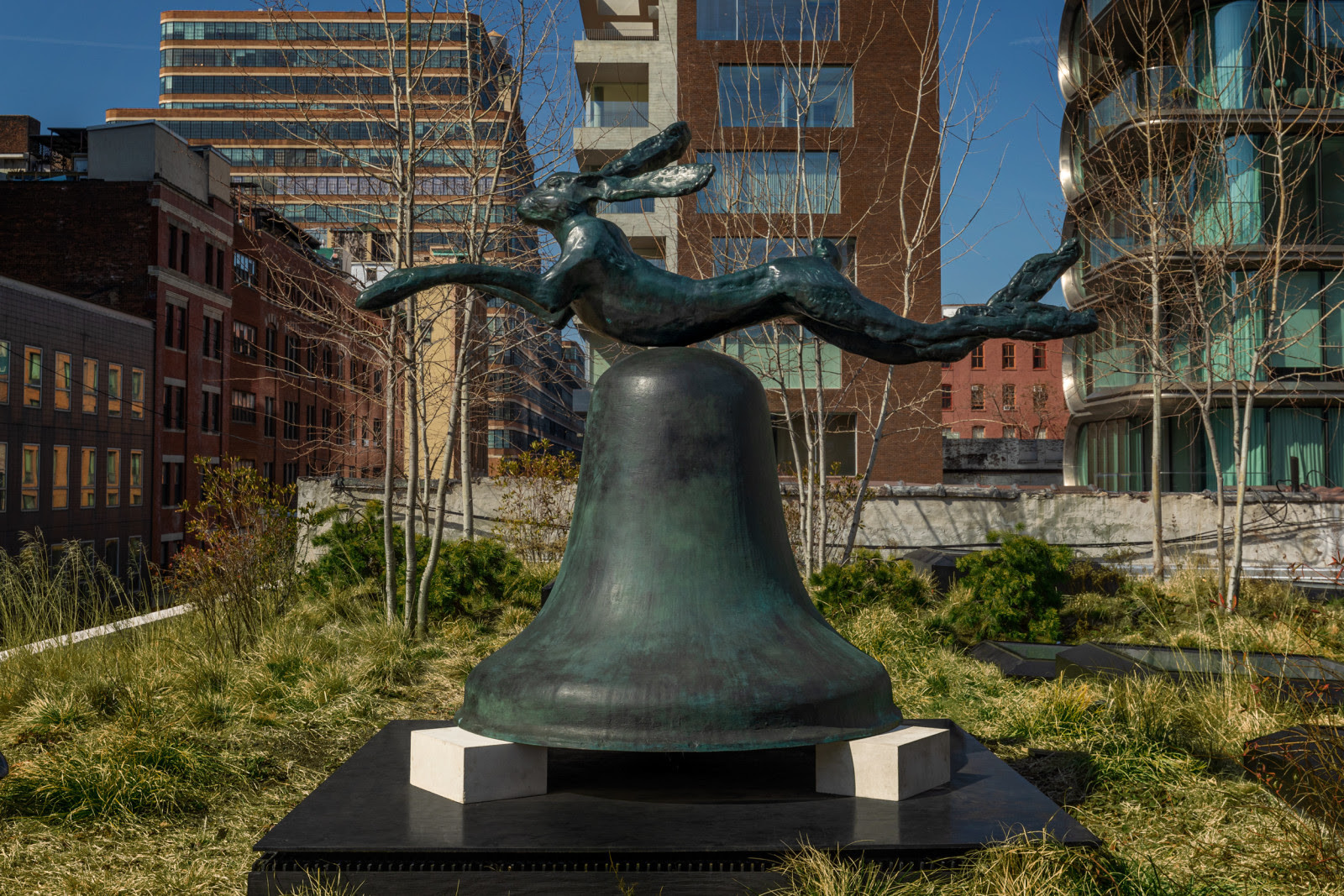
| Barry Flanagan in the Kasmin Sculpture Garden, 2020. Photography by Christopher Stach. | |
|
Licht invited Flanagan to participate in the Museum of Modern Art’s touring show, ‘Young British Artists, Six Painters, Six Sculptors’ in 1968. Two of the artists included already had an international reputation; Phillip King and Bridget Riley were representatives of Britain in that year’s Venice Biennale. Flanagan exhibited ‘stack 1 67/68’, ‘io’ 1965, ‘al casb 4’, 67, and ‘rope 2 67’.
The first time Flanagan’s work was shown in New York was at The Guggenheim Museum for the Theodoran Awards Exhibition in May 1969. Among the other artists were Gerhardt Richter, Gilberto Zorio and Bruce Nauman. Flanagan’s ‘four rahsb ’67’ (1967) was subsequently acquired by the museum. Reflecting on 1969 in 2008, Flanagan remarked with a typical understatement, ‘It was a busy year.’ (16)
During 1969, Flanagan was involved in numerous group shows in Europe, London, and the USA, as well as two solo exhibitions, one in Germany, at Museum Haus Lange and the other in New York at Fischbach Gallery. He made visits to New York, where he met Sol LeWitt, Carl Andre, Mel Bochner, Dorothea Rockbourne, Richard Artschwager, Joseph Kosuth, Chuck Ginnever, Eva Hesse, Walter de Maria, Lucy Lippard and Seth Siegelaub to name a few. Irritated by the way Minimalism and ‘anti-formalism’ by New York artists dominated art magazine discourses, he decided to put together a documentary exhibition of British and European artists whose work significantly contributed or foregrounded these discussions and were equally radical and meriting attention. He made panels with photographs of works by Bruce McLean, Richard Long, Roelof Louw, John Latham, Event structure Research Group and himself. Each included an artist’s statement. He showed these panels at The Fischbach Gallery and exhibited slides of these artists’ works in Lippard’s loft on Prince Street, SoHo. Siegelaub, Andre, Artschwager and de la Maria attended and ‘there were large bourbons all round.’ Michael Compton, then keeper at the Tate Gallery, by chance in New York at the time, was invited to join them. (17)
Amongst the group shows of that busy year were ‘When Attitudes Become Form’ and ‘Op Losse Schroeven’. The catalogue for ‘Op Losse Schroeven’ contains a section of artist’s plans. Flanagan presented ‘Amsterdam projects’ from a series of schemes to bag up canal water and canal silt. The plans included making a bag of seawater, a sea sandwich and various happenings and performances involving making holes in the sea. The sea bag idea was for it to contain water filled from high tide ‘to make the sea stand up’. The inverse of this scheme became a reality in the film ‘a hole in the sea’ which I discuss below. The bag’s shape is echoed in the bronzes with the bell, and helmet and also the mounds or heaps that form the base of works. For instance, ‘The Juggler’ (1994) stands on a lumpen mound, cast from a mixture made of crushed recycled plaster from discarded work and fresh plaster. (18) The early schemes for containing seawater led to different directions, to solid realisable objects and also to quixotic temporality.
|
|
|
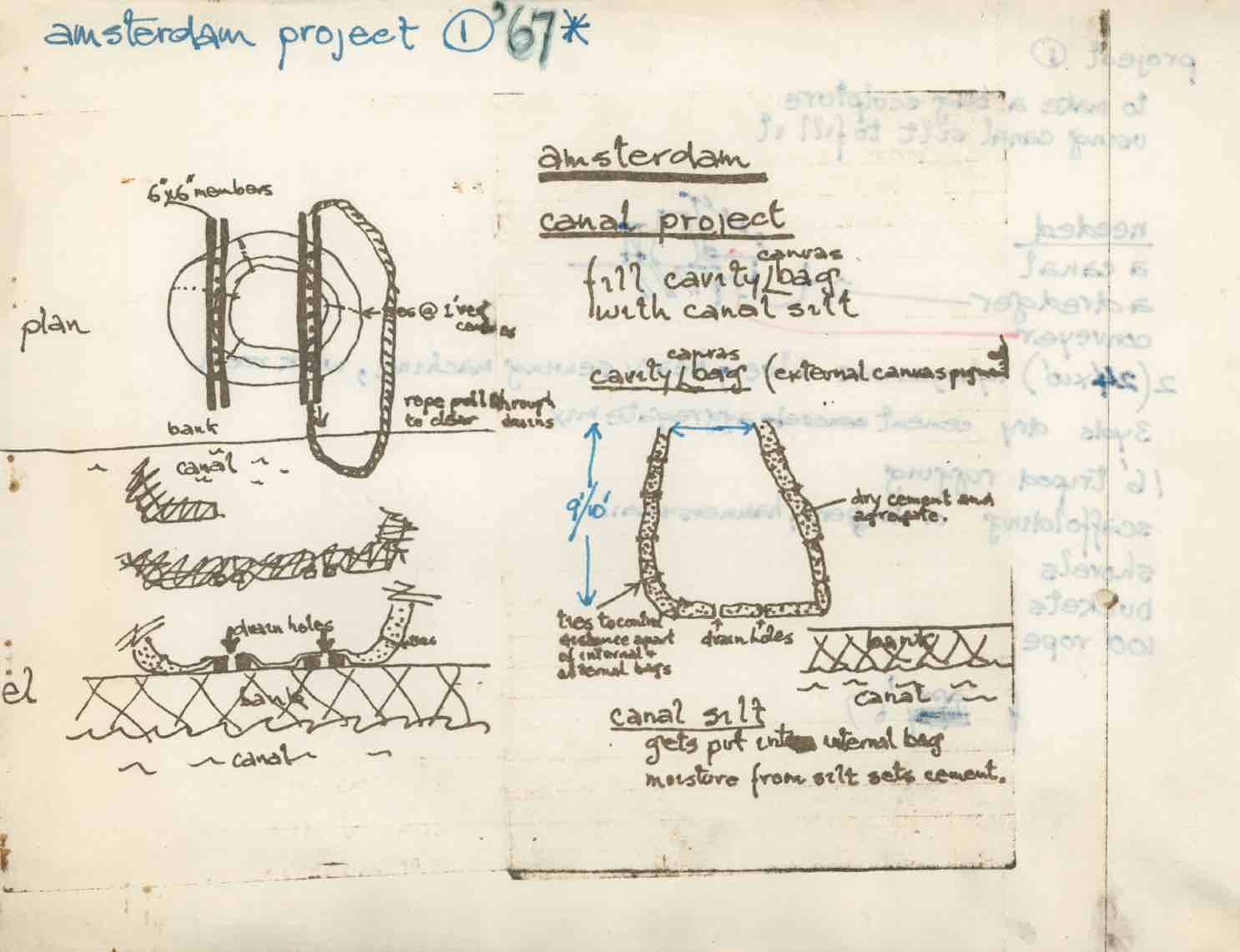
| Barry Flanagan, amsterdam project 1 ’67, 1967, cyclostyle print and ink 8 ½ x 11 ¾ in, 21.5 x 30 cm.
| |
|
Flanagan spent two weeks in the city to install and make the work for the Fischbach exhibition. (19) He arrived directly from the opening of another solo show, his first museum exhibition, which was held at the Museum Haus Lang, Krefeld, Germany. In an approach to working which is now taken for granted but was then radical, Flanagan was invited to stay at the museum in order to make the work, rather than transport existing works to the gallery. He later said that the Mies van Der Rohe building was more than a foil in which to situate work, but an architectural collaboration. (20) Flanagan himself had studied architecture before switching to sculpture and the experience of light and space shaped the production of his work. He started to consider light as a sculptural component and differentiated between daylight and other light sources as well as using light as a measuring device. The work, ‘3 space rope sculpture’ (1969) connects three spaces with a line made by rope. It is a drawing on the floor. A second version of the three-space rope sculpture was shown in the Fischbach Gallery. The press release described it as ‘an introduction to the experience of space and the inflection of shape through its infinite possibilities of delineation.’ (21) Dore Ashton remarked the ‘sensibility working in Flanagan is, despite his revolutionary intentions, healthily traditional.’ (22)
Later the same year, Flanagan was one of the artists included in ‘Art in Process 4’ held at Finch College and organised by Elaine Varian. (23) He showed ‘heap 1 ’67’ (1967) and told Naomi Spector of the Fischbach Gallery that installing it ‘takes about four hours when you know what you are doing and you need two people.’ (24)
Collaboration was equally important in Flanagan’s film ‘a hole in the sea’ (1969). It was made with the German filmmaker Gerry Schum for the Land Art TV gallery exhibition and was first broadcast in the studio of SFB Berlin 28 March 1969. (25) The exhibition comprised of eight artists’ films made with Schum. Flanagan made the film in February in Scheveningen, near The Hague, in the North Sea. He later remarked on how bitterly cold it was. Jan Dibbets, a friend of Flanagan, also made his film ‘12 Hours Tide Object with Correction Perspective’ (1969) in Scheveningen that month. Flanagan’s film shows the tide coming in to fill a Plexiglas cylinder that stands vertically in the sand, giving the impression of a hole in the sea being filled. It was shot in ten sequences, with views of the cylinder side-on at ground level as well as a bird’s-eye view, which he achieved by balancing on the extended ladder of a fire engine that rested on the sea wall. Flanagan enters the frame in the last sequence to remove the cylinder from the sea and to reveal the construction scenario. It demonstrates his preoccupation with making work to define presence and absence, the solid and the fragile, the material and the immaterial. These were consistent inquiries explored throughout Flanagan’s practice, alongside the connections between the language of poetry and the poetics of sculpture.
Unlike Flanagan’s subsequent films when he edited in-camera, using the on/off switch, ‘a hole in the sea’ is crafted so that the duration of the tide is compressed into a film lasting three minutes forty-four seconds. This is quite different from ‘Sand girl’ (1970) which lasts seventeen minutes and records the duration sculpting-in-action. |
|
|
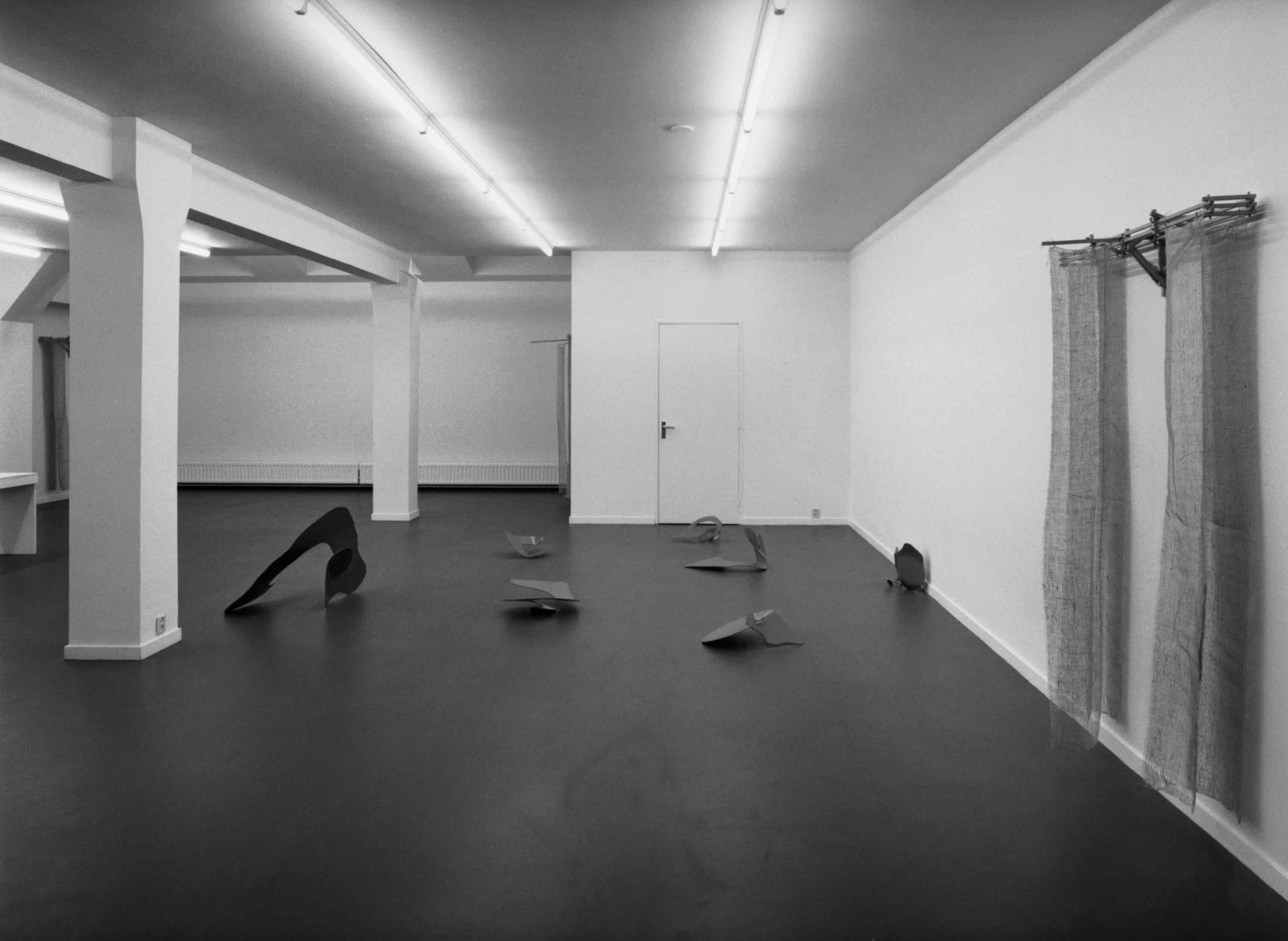
| Installation view from exhibition held at Art and Project Gallery, Amsterdam, 1979. On floor: ‘Curl Snoots’ (1979). On wall: ‘Shadow Catcher’ (1977). Courtesy of the Estate of Barry Flanagan.
| |
|
A different form of collaboration is the transaction between artist and model. This occurs in the film ‘Sand girl’ in which Flanagan filmed sand falling from a small hole in a sack onto and around a naked woman. Before he began filming, he tied the sack to the roof girders, with a rope he had in the studio and pushed it, so that it swung slowly backwards and forwards, gradually coming to a holt. There are glimpses of the studio’s industrial interior and a fleeting shot through the window to the roofs beyond, but the focus remains on the pouring sand as it creates contours and mounds. Sand, by feel and association, is malleable and when, towards the end of the film, the woman rises, the camera tracks the imprint of her body. This suggests the moment of the removal of a cast object from its mould. The film shows the process and action of sculpting in real-time.
Flanagan would frequently make a new work by using an existing one as the starting point. This is not unusual, but Flanagan’s particular lightness of touch runs throughout his oeuvre, for instance in the three ‘hole in the sea’ (1967 – 70) photo-screen prints. Flanagan took the sequence of photographs during the TV broadcasting of the film. The fact that the TV set was broadcast in black and white is the reason the prints were in black and white. As noted the film was made in colour. Flanagan had first made notations for using water as sculptural material in 1967, when he made diagrams for the ‘amsterdam project’ previously mentioned.
In 1969, Flanagan started printing ‘funds’. Minting ‘art’ money was a humorous comment on the operations of the art market. Like Warhol’s dollar bills, the lino prints symbolise exchange both in the art product’s commodification and its transaction value for service rendered. Flanagan gave envelopes stuffed with prints in denominations of five, ten and fifty pounds to his collaborators. The Flanagan mint plays on the notion of authenticity in the art object; each note bears his thumbprint, marked in blue ink. The choice of the colour blue utilises a witty double bind, of the blueprint, which in itself is a characteristic feature of Flanagan’s work. The following year he worked on a series of thirteen mono-prints, again using his inked thumbprint as the stamp. Each was configured differently. The fingerprints draw attention to his hands-on manipulation of clay; this is consistently demonstrated in the sculptures. There are traces of the grip of his hand and the imprint of fingers and thumb in the thinker seated on ‘Monument’ (1996). This remarkable work is a homage to Rodin’s monumental ‘Gates of Hell’ (1880-1971). It has a material and visceral quality that responds to Rodin’s handling and uses a tactile sensibility to create an inventive transformation of his composition. Flanagan uses three different methods to model the components. Rodin’s angst-ridden ‘Three shades’ become three virile dancing Nijinski hares, modelled in clay and using Rodin’s own triumphant subject of the celebrated dancer as a refutation in the face of the gates of hell. The thinker is made with modelling resin and is muscular like Rodin’s ‘The Thinker’, but in Flanagan’s hare the limbs are indicative, tense equivalents of musculature with the resin slabs wrapped round the armature. The gate is a potent mass of material, showing the chiselled and hacked marks of its making and its scale makes the confrontation with physicality inevitable. It is cast like the base on which the ‘The Juggler’ (1994) stands.
The trace of Flanagan’s hand is nowhere more present than in the mysterious, ‘Figure in the Trees’ (1993). Here, a man-sized long-eared hare with a rook on his shoulder wanders contemplatively with inkpot and pen balanced on his staff, ready for inspiration and as if caught in the act of creation. The figure is decorated with looping, circular gestures drawn into the surface and on the sculpture is an inscription that seems to mirror the gestural spirals. It says: ‘the loss of innocence, loss of freedom, slaves contribute’, rendered as: Con/Trib/ute.
Flanagan’s commitment to the relationship between art, society and institutional responsibility informed his intentions to making and showing work. His statements often assert this. Notably in Germano Celant’s book Arte Povera (1969), Flanagan writes, ‘Operations grow from the sculptural premise, its exactness and independence is the clue to the scale of its physical, visual and actual consequence in society.’26 In a letter published in Studio International, Flanagan appealed to the ‘public communicators and institutions strata to take on some creative responsibility, instead of operating within the safe untouchable historic “professional” cocoon.’ (27) A few years later, in 1973 he postponed his exhibition at the Museum of Modern Art, New York, in solidarity with the museum staff union Pasta MOMA, who were striking over better terms for a new contract. (28)
|
|
|

| Barry Flanagan, Figure in the Trees, 1993, bronze, 70 x 36 1/2 x 26 1/2 inches, 177.8 x 92.7 x 67.3 cm. Edition of 8 + 1 AP. | |
|
Flanagan took direct action by making sculptural street furniture to protest against the local authority’s decision to erect permanent bollards in Camden, London where he then lived. Assisted by his friend, the artist Andrew Dipper, he hired a van in which he had a sewing machine, a cement mixer and the materials needed to make the temporary bollards. He drove around the area to find a suitable site, fabricated the bags in the van and filled these with the concrete and sand. Flanagan made a short documentary film of the action. He made these interventions across the district but unsurprisingly none of the bollards remained in place for very long. At the same time Flanagan was invited to show a sculpture outside Swiss Cottage Library as part of a Camden-wide exhibition in the summer of 1969. He made ‘Camden piece’ (1969) from five large sand filled canvas bags with a long one resting on the top. It was vandalised almost immediately.
The destruction of a sculpture in 1972 commissioned by the Peter Stuyvesant City Sculpture Exhibition for a public space in Cambridge caused Flanagan to rethink what might be a more effective strategy for creating an interface for art and its public.29 The same year saw the publication of George Ewart Evans and David Thomson’s book The Leaping Hare. An anthropological study of the hare, combining legends from different cultures, superstitions and mythologies with gamekeepers and poachers’ stories and anecdotes, it struck a chord with Flanagan. He had grown up as a country boy and knew many people whose livelihoods required the close understanding of animal behaviour. The book shows that the hare is a symbol of unpredictability, resurrection and renewal in different cultures. For the Chinese, the hare lives in the moon, instead of the man in the moon in the West. The hare is the symbol of the mother goddess which is the pre-Christian Estes, the forerunner of the Easter festival.
One of the selectors for the ill-fated Stuyvesant Project was Stewart Mason. He was dismayed by the scandal in Cambridge and as consultant to the Leicestershire County art collection, commissioned Flanagan to make a sculpture for Rawlins School, Quorn. Needing time ‘to chew things over for a bit’, Flanagan decided to go to Pietrasanta in Italy, famous for its marble quarries and carving workshops and where Michelangelo chose to quarry stone for the dying captives and Moses. With his choice of stone for a sculpture designed to be outside, Flanagan both revisits tradition and continues experimentation. He used Portoro marble and titled the work ‘Portoro 1’ (1973). The sculpture has the appearance of objects found around a builders’ yard and also suggests prehistoric standing stones, familiar yet elusive. Teresa Gleadowe made the case for Flanagan’s breadth of practice in the 1982 Venice Biennale publication, by asserting that ‘the diversity of materials simply opens a new area of research and was—consistent with his earlier attitudes.’ (30) |
|
|
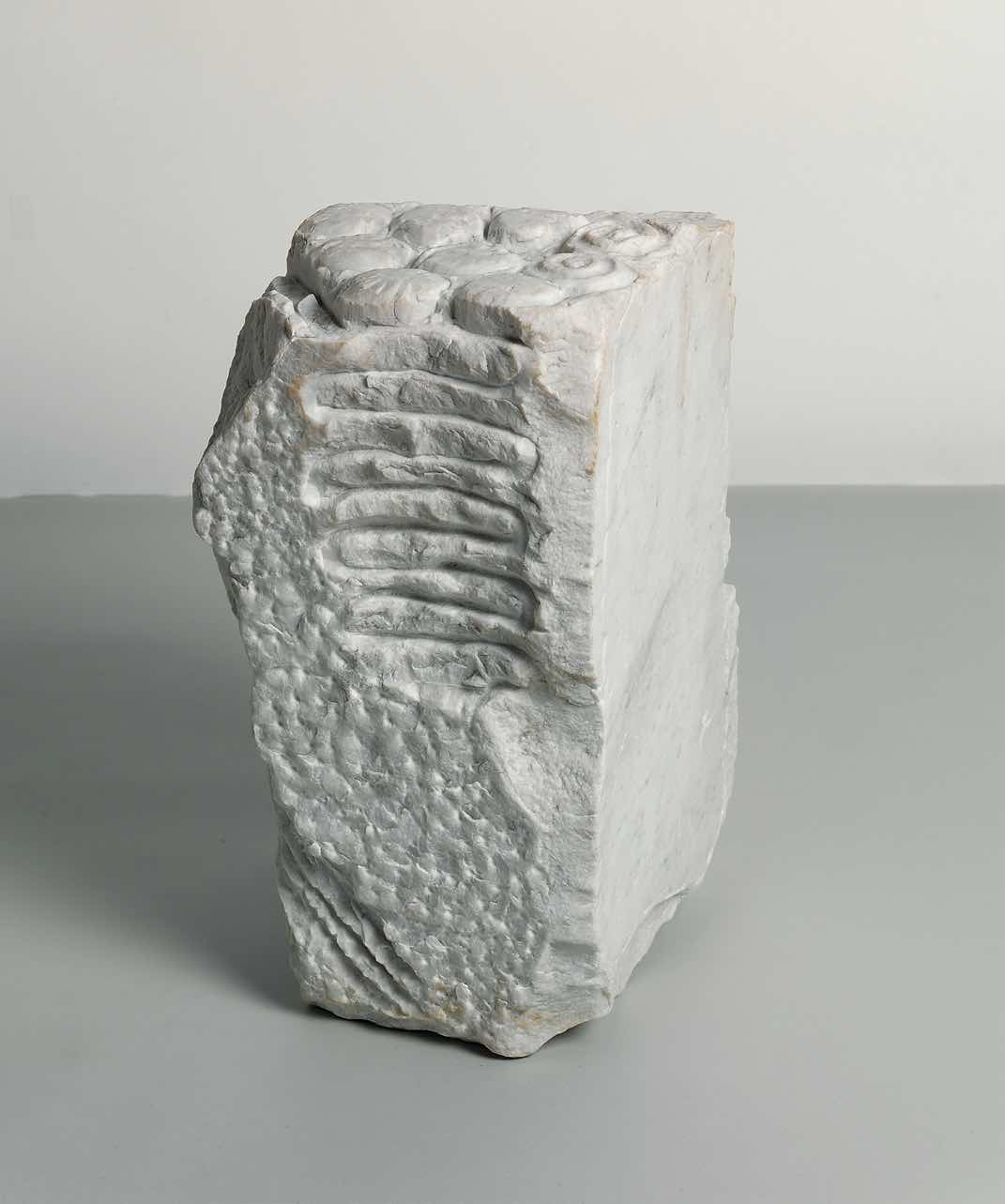
| Barry Flanagan, The Road to Altissimo, 1973, marble (Arabescato Altissimo, Carrara), 19 ¼ x 10 ½ x 12 in, 48.9 x 26.7 x 30.5 cm.
| |
|
Flanagan’s stone carvings appear as if they have always been there, like signs of an earlier civilisation with runes and hieroglyphs. For instance, the title ‘the stone that covers the hole in the road, the skull’ (1974) is a form of concrete poetry and is as much a part of the work as is the stone and the lines carved into it. Similarly, ‘The Road to Altissimo’ (1973) suggests implicit meanings and associations. Flanagan found this discarded marble in the stone carvers’ yard. It had been partly carved. He added spiralling lines to the top and a curvilinear pattern to the side, suggesting repetitious hairpin bends and echoing the blanket folds in ‘pile’ (1967/68).
When in 1979 Flanagan’s investigations turned to figuration, modelling and casting in bronze, his experimentation with the medium was as unexpected as the soft sculpture and building materials had been to audiences fifteen years previously.
In response to the question of why and how the hare became an important motif in his work Flanagan would recount an occasion when driving from Sussex to Cornwall. ‘I did see a hare and was most impressed by its gait. I was travelling from Sussex to Cornwall and this hare was running just beyond the hedge… And there were three figures, one of which was a dog, coming over the brow of the South Downs, and they were literally walking a Labrador, but the hare was there and was coursing along, and rather leaping, so that was it, a hare, a leaping hare.’(31)
The hare dislikes the smell of smoke; it runs directly to the source of fire, leaps over it to escape, unlike any other animal. This account in Ewart Evans’ book recalled Flanagan’s remark that he ran into the problem, rather than away from it. And the hare’s anthropomorphic qualities in Flanagan’s practice present at turns the humorous, vulnerable, triumphant, poignant and convivial nature of existence. ‘Large Boxing Hare on Anvil’ (1984) evokes power, strength and vulnerability. It is over three metres high and brings the viewer to a disconcerting relational proximity with the creature’s upright body. It reinforces one’s own suddenly self-conscious verticality and it unhinges normal relations with the floor as its dark brooding frozen stillness disturbs equilibrium and balance. For a quixotic moment, an instance is captured. This disturbingly alive hare is strange and uncanny—it is not subject to human control and yet its upright presence, poised on the anvil, recalls a dark shamanistic power. The hare taps the threshold of otherness. It is the horror and the beauty of encounter with something disturbingly alive.
Although these bronzes are silent, sound is evoked by association with the bell and the anvil. Flanagan drew from deeply embedded cultural iconography and tapped the growing interest in Shamanism to figure new solutions to the continuing and fundamental question of where cultural imagery comes from. Like March hare folklore, he combines the ultimate paradox in the unpredictable flow of experience.
The equivocal position is clear in another group of works Flanagan made in 1979. ‘Neither Fish Nor Fowl’ shows an upright form, plaster painted blue encased around a rod from which it emerges. It is ambiguously anthropomorphic. This quality is most prominent in ‘neither growth nor structure A’, ‘neither growth nor structure B’ and ‘Untitled 1979’. These works are made from hessian, wire and plaster. The use of red cotton thread in ‘neither growth nor structure A’ goes beyond its function of sewing with loose threads hanging down at the opening cavity and the red seam line becomes more apparent, like the seams in Rodin’s sculptures. The group ‘neither growth nor structure A’ and ‘neither growth nor structure B’ are like vessels, or bags resting on their sides, and reveal a cavity or a hole. A third, ‘Untitled 1979’, is open at both ends. As objects they seem to propose the ambiguous dialectic of the creative process, as procedural repetitions between structural order and natural growth. They appear vulnerable to handling yet also seem to invite it. |
|
|
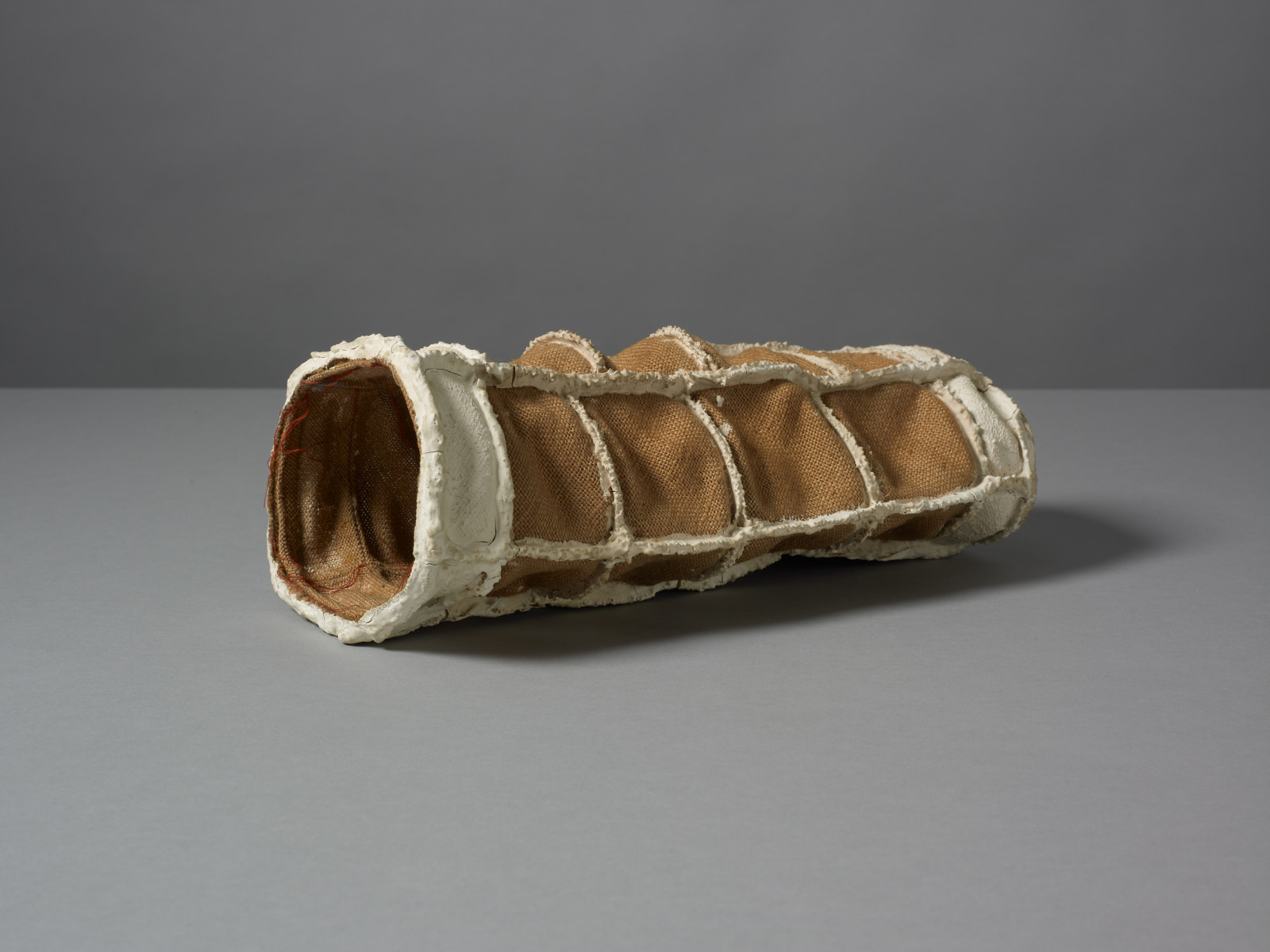
| Barry Flanagan, Untitled 1979, 1979, hessian and plaster, 5 1/2 x 14 x 7 1/4 inches, 14 x 35.6 x 18.4 cm. | |
|
For Flanagan the activity of making sculpture was an extension of our three-dimensional experience of the world. Although his work is primarily visual, orchestrating ways to demonstrate the sensual and the tactile with surface, colour, weight and balance, sound and light were as much part of his sculptural vocabulary as material objects. They are brought together in sculptural propositions, such as ‘Shadow catcher’ (1977), that are at once serious and humorous, clear and contradictory. The idea of catching shadows is, in practical terms, impossible to realise but Flanagan demonstrates, through the sculptural construct, a pragmatic but nonetheless imaginary solution. Poetry is a key to Flanagan’s practice throughout his career. It can be seen in his early exploration of concrete poetry and in the way in which he allowed materials from sand and cloth, to stone and bronze to ‘speak’ for themselves.
For Flanagan, sculpture was as much sound, light and performance as it was bronze and carving. The exposure of process and method is something Flanagan consistently performed in every medium he used throughout his career. He frequently used casts of objects as components in sculptures and allowed parts of the armature to show through stripes of clay or plaster, thereby exposing and recording the processes of its making. The durational nature of his films is translated into the bronzes, as we bear witness to the processes of casting. It is aptly contradictory then, that the fleeting hare should become a monument to time and duration, channelling the quixotic, mysterious propositions implicit in the early work. When in 1979, Flanagan was given a dead hare, he took it to the studio and laid it on paper, tracing its contour with its blood. Later he added the notes: ‘they said the hare weighted the equivalent of seven pheasants and was unusually heavy’ and ‘the hare knows art history, Master Beuys’. (32) Here Flanagan, ever hare like, doubles back self referentially, his intention flitting in and out of view, between the pragmatic and the mythical, never allowing itself to rest at a logical conclusion.
The implications of juggling are directly rendered in ‘The Juggler’ (1994). The exceptionally slender long-eared hare stands on a sack, holding a juggler’s club, cast from a toy version, which, like a baton, suggests the orchestration of a performance. “Hello Joseph He cried,” is inscribed on the base which Flanagan pinched from a drawing of a juggler by Jack Yeats in his collection. The literality of the juggler’s actions and the panache of performance catch the slippery nature of Flanagan’s thinking through material. Flanagan’s sculptural transformations are mercurial, but strangely constant processes of filtration, inversion and crystallisation.
|
|
|
Download the endnotes here.
Curator and writer Jo Melvin is the Director of the Estate of Barry Flanagan. Recent projects include exhibitions at Kasmin, Waddington Custot Gallery, the Henry Moore Institute, Leeds and Raven Row, London. Recent catalogue essays include “The Xerox Book” Paula Cooper Gallery, New York, “British Art and Conceptualism 1966-1979” Tate Britain and “Seth Siegelaub: Beyond Conceptualism” at the Stedijk Museum, Amsterdam.
|
|
|
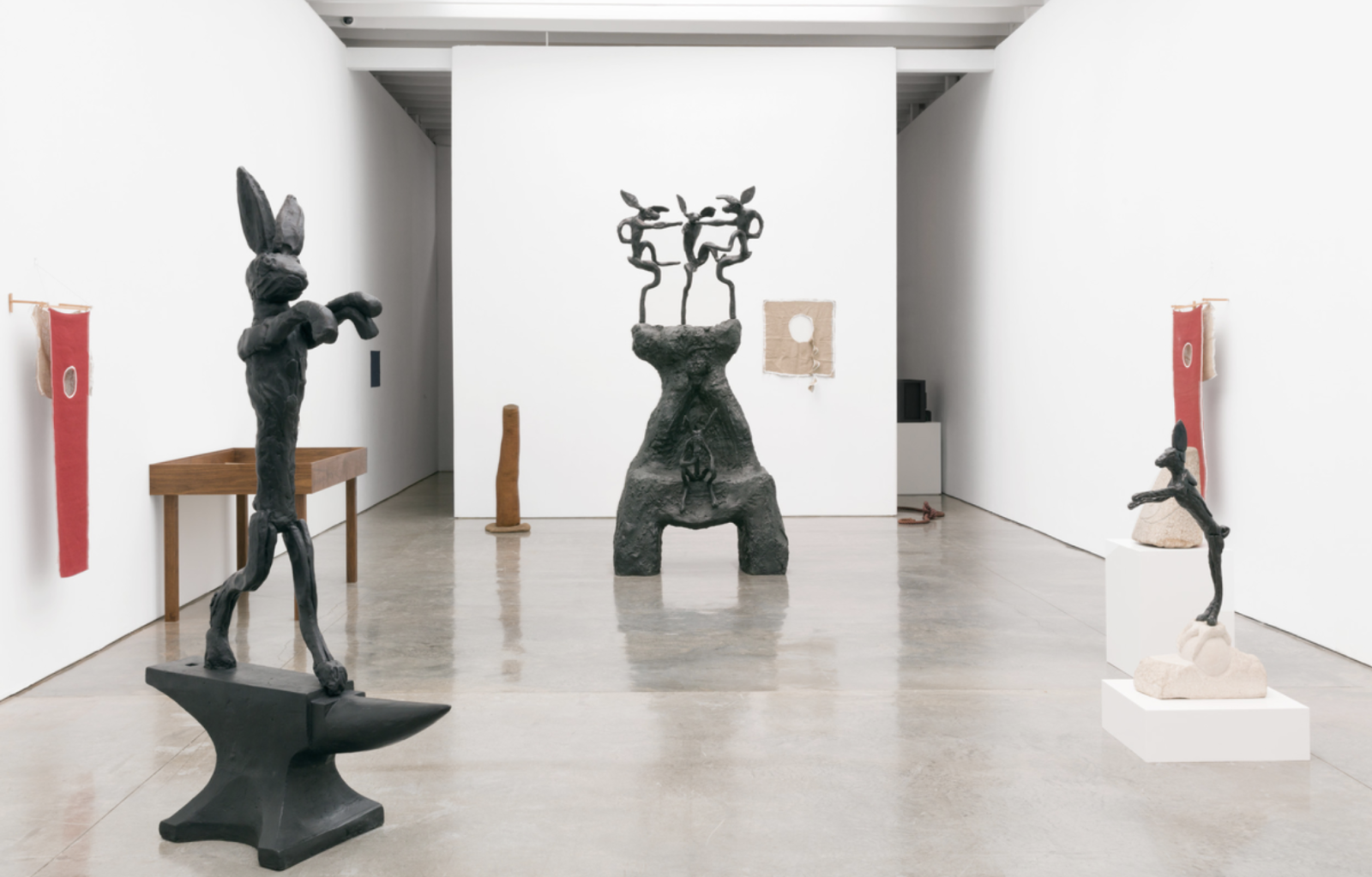
| Installation of Barry Flanagan, The Hare is Metaphor. Photography by Diego Flores.
| |
|
Copyright © 2020 Kasmin, All rights reserved.
Our mailing address is:
Kasmin
509 West 27th Street
New York, NY 10001
You are receiving this email because you subscribed to Kasmin''s mailing list. |
|
|
|
|





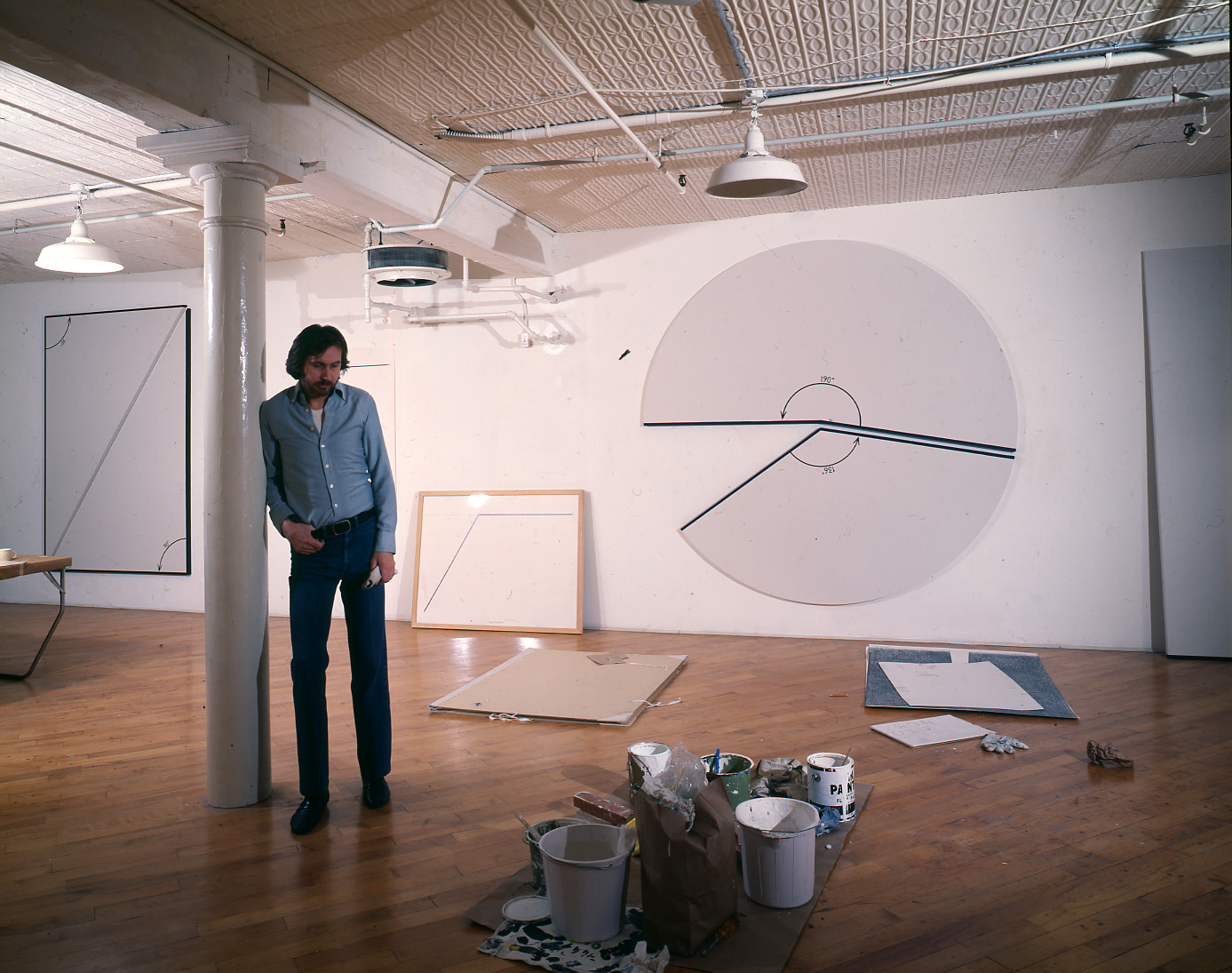
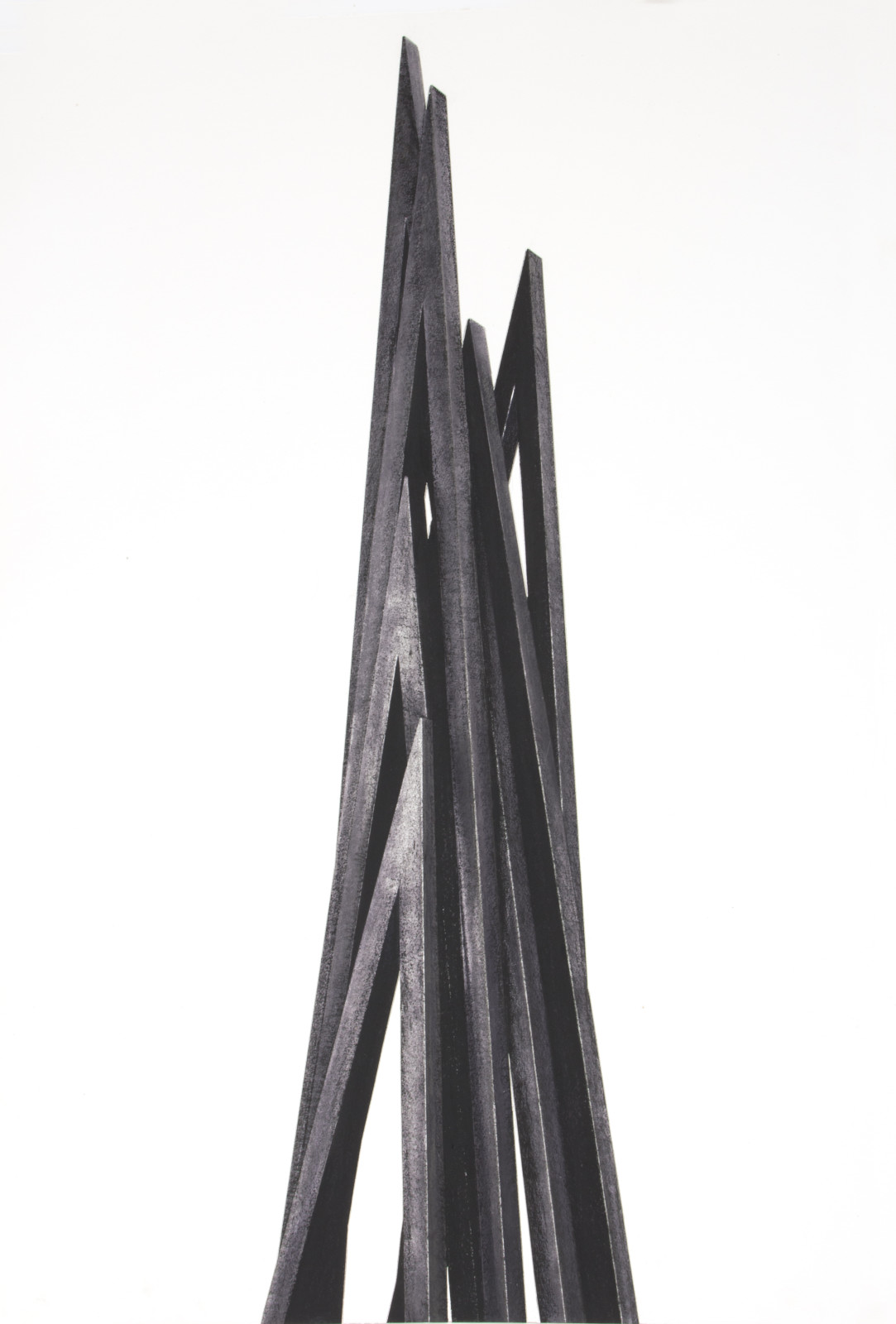
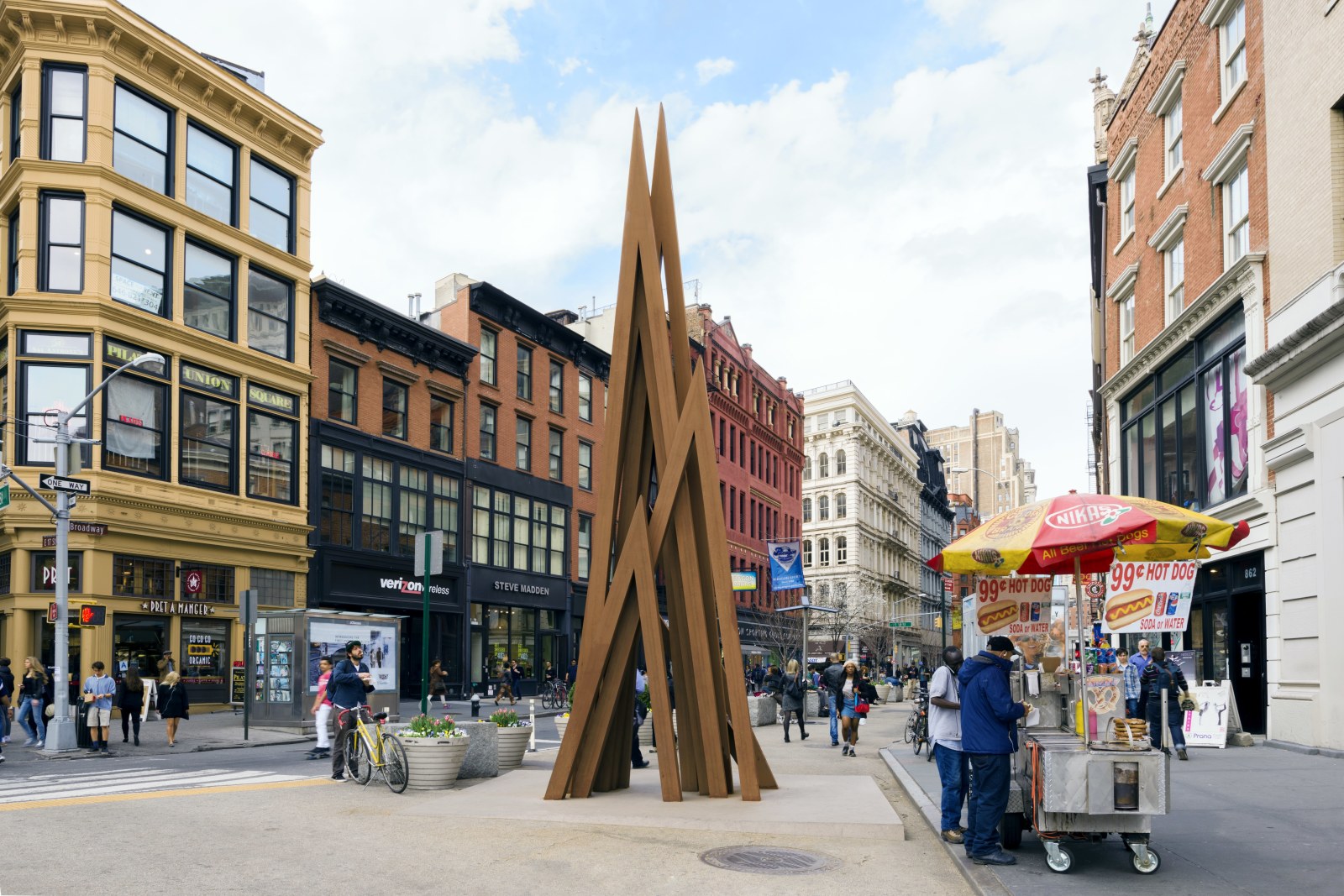
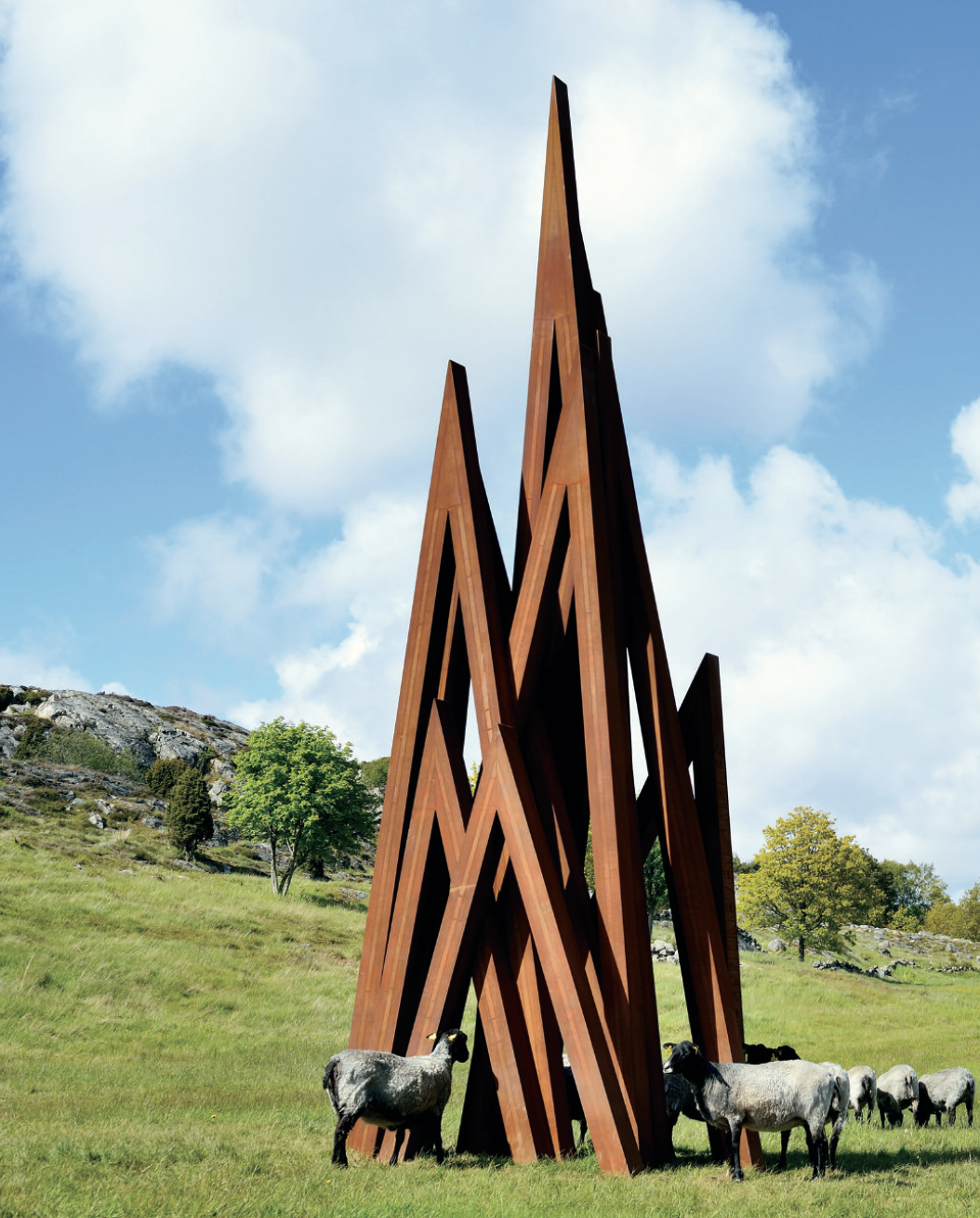
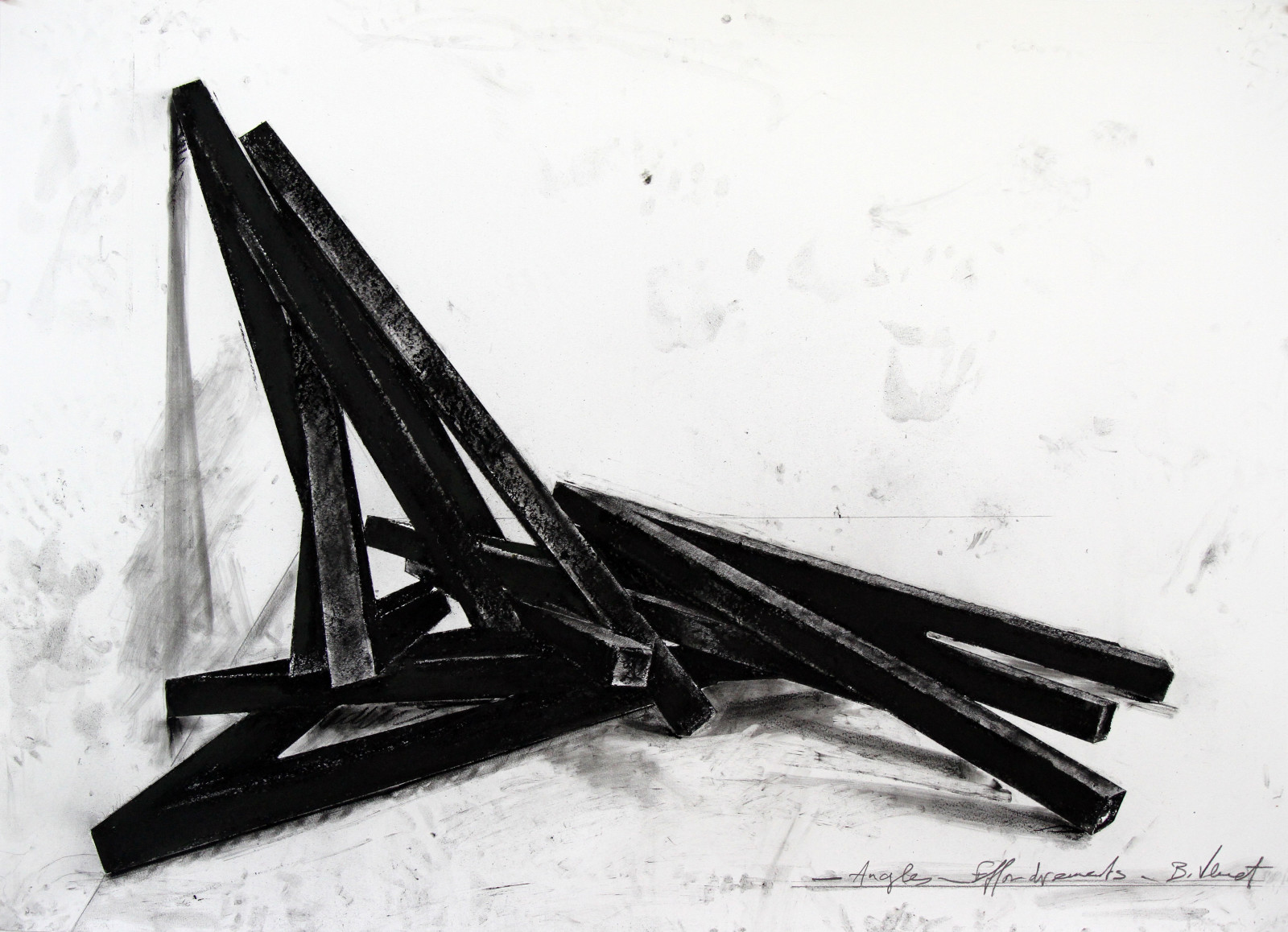

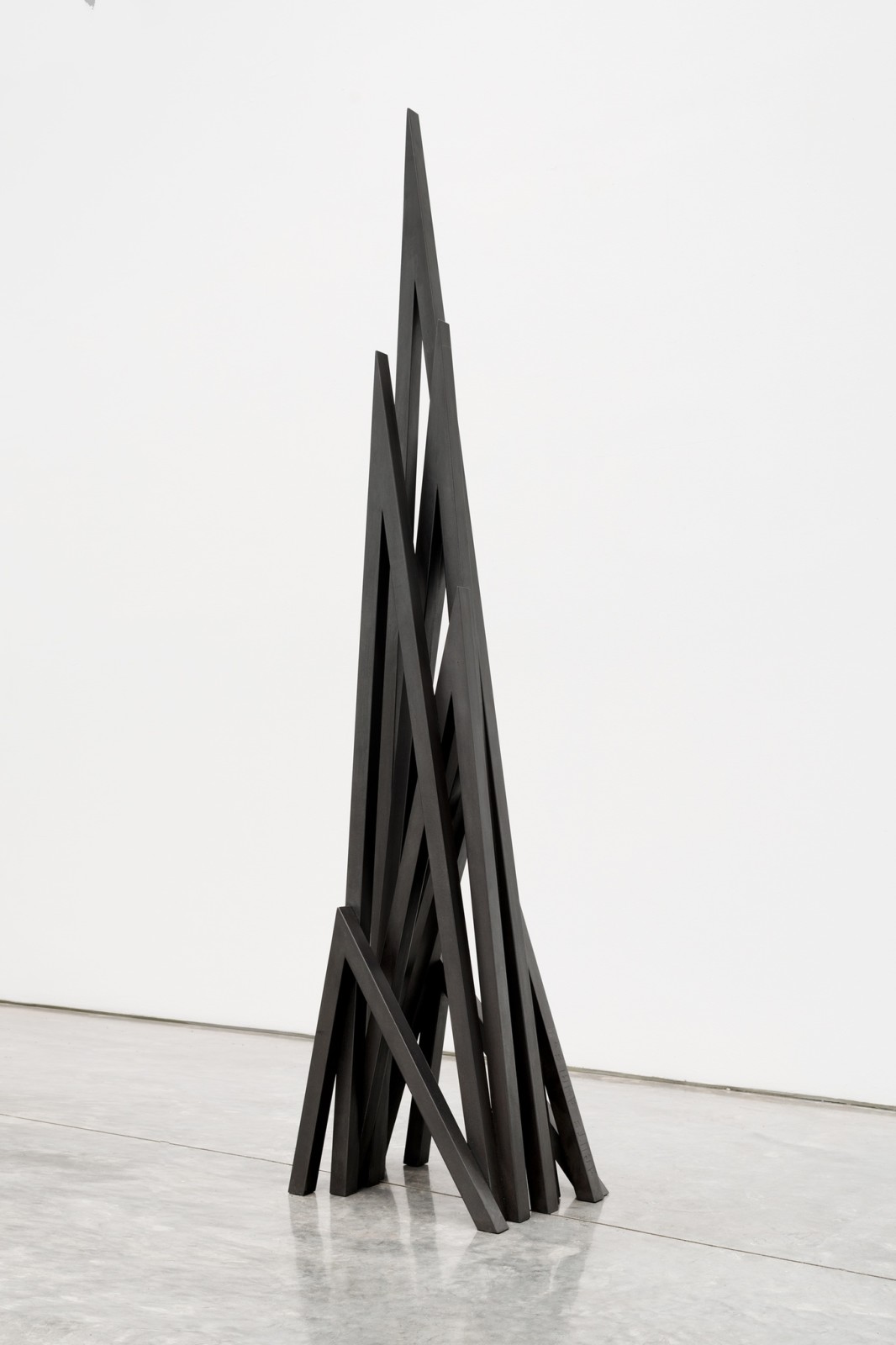
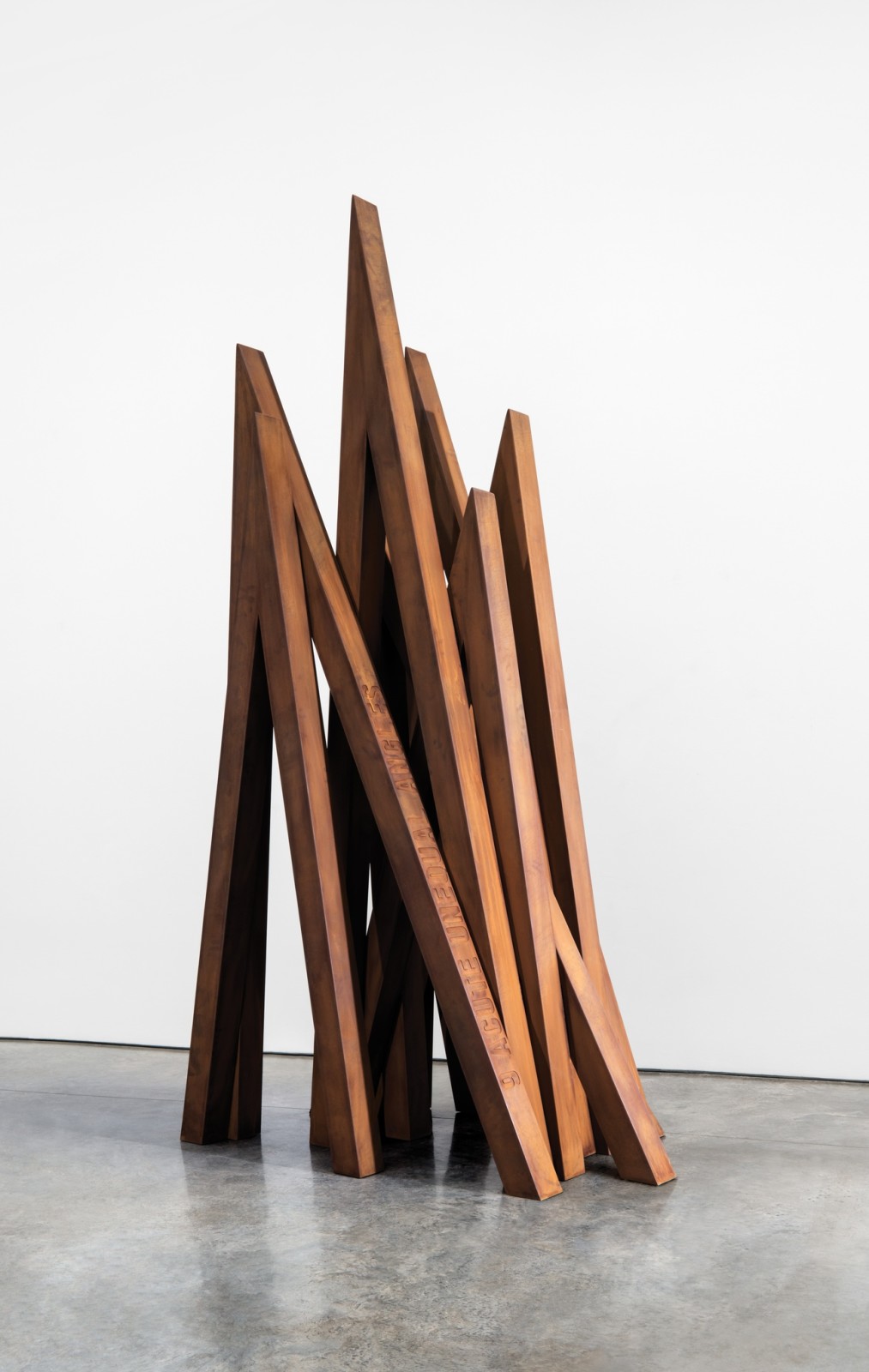
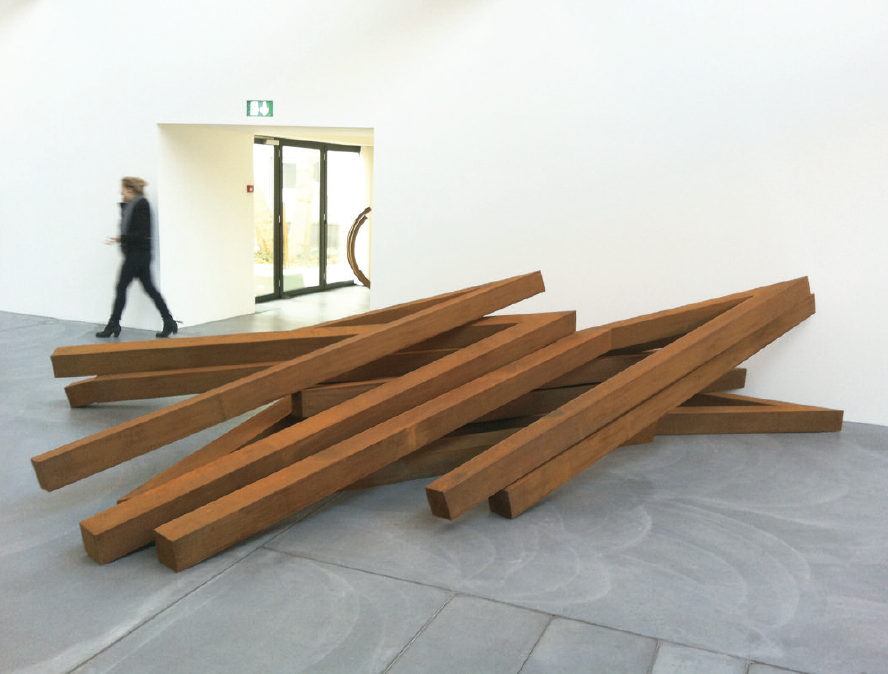
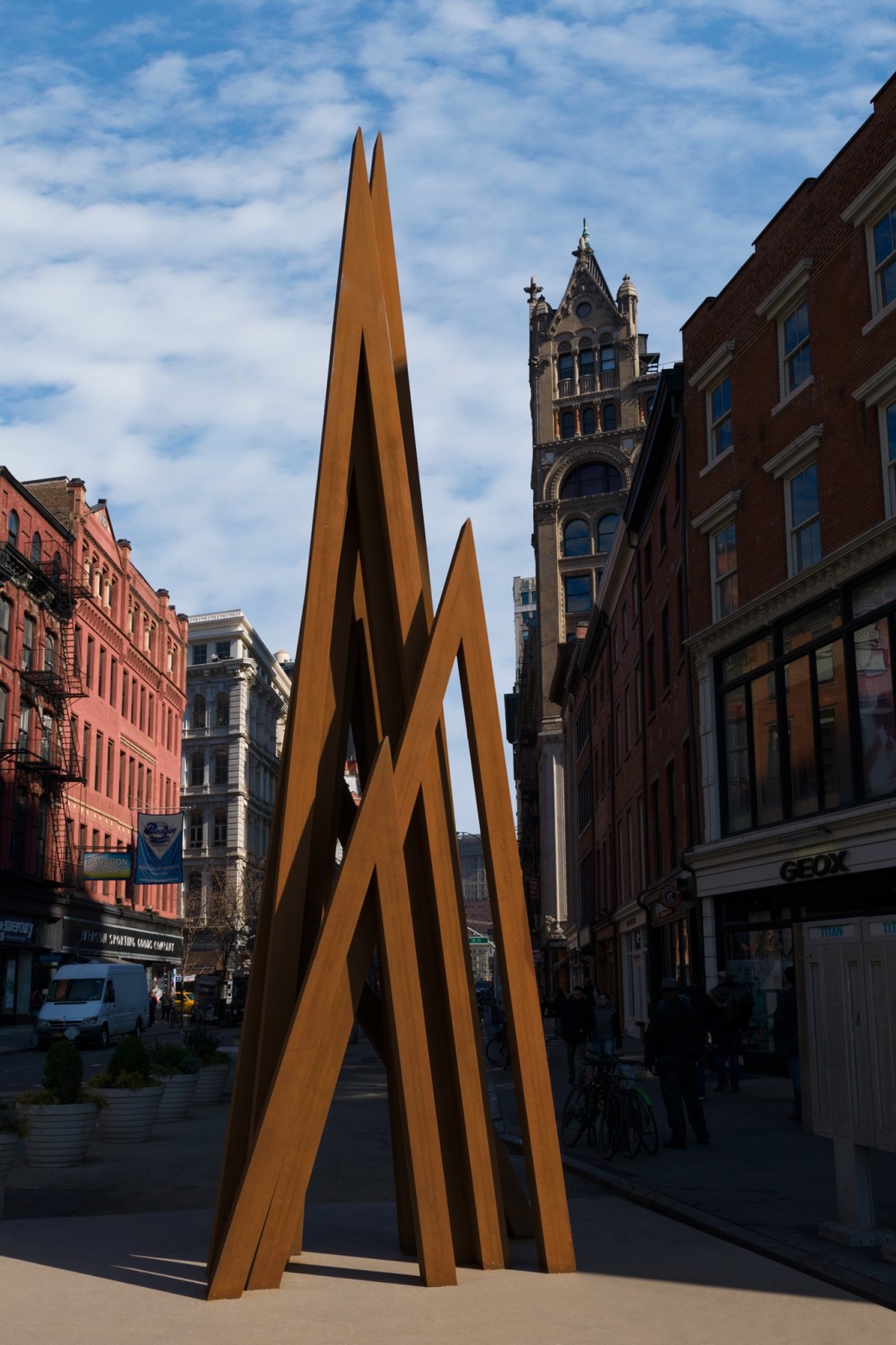
 Arts and Entertainment
Arts and Entertainment Business and Industry
Business and Industry Computer and Electronics
Computer and Electronics Games
Games Health
Health Internet and Telecom
Internet and Telecom Shopping
Shopping Sports
Sports Travel
Travel More
More